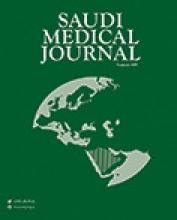Abstract
OBJECTIVE: The lines connecting the anterior superior iliac spine to the center of the patella and the center of the patella to the tibial tuberosity make the quadriceps angle (Q angle), and this can be used as data for patellar alignment. We undertook this study to provide detailed information about the change of Q angle values with age and activity.
METHODS: The study was conducted on 474 active (AG) (soccer players) and 765 sedentary (SG) boys (N=1239) from the age of 9-19, and the sedentary group also served as control to their age matched active counterparts. The statistical methods used were the student's t-test and the 3 way analysis of variance (ANOVA). The study was carried out in the laboratories of the Anatomy Departments and School of Physical Education and Sports, Istanbul and Hacettepe Universities between 2001 and 2003.
RESULTS: The right and left Q angle values within both groups were statistically insignificant. The comparison of the groups showed a very high level of significant difference between the groups for both knees (AG right Q angle = 14.54 +/- 4.76, SG right Q angle = 17.98 +/- 3.24; AG left Q angle = 14.41 +/- 4.61, SG left Q angle = 18.12 +/- 3.55). The 3 way ANOVA showed that the age and physical activity had equally highly significant effects on Q angle values with a greater change in the active group's values.
CONCLUSION: We conclude that 1) children and adolescents have greater Q angle values than adults, 2) a change in quadriceps strength and tone, caused by both growth and activity, results in a decrease of the Q angle and 3) activity, particularly playing soccer in our study, has a remarkable effect on the Q angle.
- Copyright: © Saudi Medical Journal
This is an open-access article distributed under the terms of the Creative Commons Attribution-Noncommercial-Share Alike 3.0 Unported, which permits unrestricted use, distribution, and reproduction in any medium, provided the original work is properly cited.






